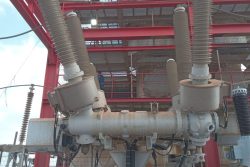Private education is one of the fastest growing sectors in Guyana economy. Investments in the sector over the past two decades or so have totalled billions of dollars. There are numerous privately run institutions offering tuition at the nursery, primary, secondary and tertiary levels and with the start of each school year more of these establishments appear. Add to these the number of other local ‘academies and colleges’ offering courses in disciplines like Information Technology, Business Management, Project Management and Marketing among other disciplines and the numbers increase significantly.
The delivery of private education is as legitimate a business pursuit as any other private sector venture. Not only has private education proven to be a worthwhile business investment, it provides alternative employment opportunities for professional teachers who, for reasons of remuneration or otherwise no longer wish to serve with the state school system. Private education also offers an option for parents who continue to express dissatisfaction with the general quality of education delivery in the state education sector.
State–run schools, for all their weaknesses in many instances, continue to produce excellent students. This much is manifested in the results of both the Grade Six and the CXC examinations though the argument is made that the success of those students is due in large measure to extra tuition provided by private institutions. At the same time and arising particularly out of the results of the Grade Six examination the argument has been made that some of the privately-run schools are really not all that they are made out to be given their high tuition fees. Some parents, however, continue to favour the better-known private schools purely because they deliver education in a more controlled environment, because the physical facilities are superior and because the classes are less crowded. By comparison, many state schools are run-down, overcrowded and offer a less than convivial environment for learning.
The rebirth of private education in Guyana is in effect a business-driven response to a pointed consumer (parent) pronouncement on the failure of the national experiment with free education from nursery to university. However well-intentioned the notion of free education may have been the simple truth is that its effective delivery has proven to be unaffordable to the national treasury and the evidence of this in dilapidated and overcrowded schools, a scarcity of furniture and poorly rewarded, overworked frustrated teachers. The current state of the University of Guyana’s Turkeyen campus is clear for all to see. In rural and interior communities the situation as far as the delivery of quality education is concerned is usually much worse than that which obtains in the main urban towns, one of the principal problems being the shortage of trained teachers in state schools in interior communities.
The human resource weaknesses of the state education system are also reflected in the fact that the private education sector may well possess a near monopoly in the teaching of subjects that are a critical part of the schools’ currculum, subjects like mathematics and the natural sciences while specialist Grade Six examination tutors – many o whom once taught in the state school system – have established reputations that have made their private classes widely popular with parents countrywide whether their children attend state-run or private schools.
The Ministry of Education, of course, remains the overarching authority in the setting of rules and procedures for the delivery of education. That is as it should be. Its responsibilities include ensuring that the demand for private education does not give rise to descent into the kind of disorder that manifests itself in discrepancies that range from ’bottom house’ institutions to exploitative set ups that are designed to do no more than fleece unsuspecting parents seeking the best for their children. What makes the ministry’s oversight role important is the ever present danger that some ‘investors’ might be inclined to place less emphasis on their obligation to their charges and focus instead on maximizing the returns from their business ventures. The ministry’s oversight role, however, should be confined to ensuring that privately-run schools comply with the various criteria, including ensuring that they comply with curriculum requirements, and are not exploitative in nature. Certainly, that oversight role should not extend to measures that restrict the growth and expansion of the private education sector, since apart from the fact that private education is an altogether legitimate business pursuit in a free market economy, the responsible and effective delivery of private education removes from the state much of the responsibility for education delivery which responsibility, if the truth be told, the state has not always handled with a level of competence that can honestly be described as reassuring.
The start of the new school year, for example, was a far from salutary advertisement for state-run primary and secondary school education. The past few weeks have witnessed a litany of complaints and protests over the patent under-preparedness of many schools to receive children for the new school year. Some of the shortcomings directly threaten the effective delivery of education and others pose a threat to the physical well-being of students. There was at least one case in which the Minister of Education was forced to concede that a school was not ready for re-opening and another in which parents themselves took action to close a school which they felt was also ill-prepared to accommodate their children. Imagine having to attend school in an environment where no furniture is available, where supposedly new desks and benches virtually collapse on the first day of school, where corridors are turned into classrooms because school rooms are filled to capacity, where playgrounds are taken over by bush, where toilet facilities are compromised by an absence of running water and where painters putting fresh coats of paint on school houses work cheek by jowl with schoolchildren. These are hardly minor glitches and some of them may even warrant serious investigation since they point unerringly to serious deficiencies (perhaps much more than that) in the ministry’s management systems which are both too pointed and too numerous to be overlooked.
We need more private sector involvement in the delivery of education; the kind of involvement that goes beyond the benevolence associated with occasional gifts of computers and other equipment and the donation of prizes for competitions. What is needed is a recognition that if the quality of education is to reach the levels necessary to drive the country’s development, wholehearted private sector investment is necessary since there is a sense in which private sector investment in education is, in effect, investment in the growth and development of the private sector itself. The delivery of high-quality education in disciplines such as information technology and the natural sciences, for example, appears, on the basis of the available evidence. to be beyond the capabilities of the state system at this time and we may well find that rather than throw computers – acquired either through costly state funding or through loans and grants from multilateral financing agencies – at schools that lack either the physical infrastructure or the teaching capacity to ensure their effective use, it may be far more cost-effective to have the private sector invest in the setting up and management of fewer, better run IT facilities to which state schools can have access and for which the state should pay. That way, at least, the money would be better spent since the private sector would be responsible for both the management of the facilities and the training of teachers to staff those institutions.
Recently, University of Guyana Vice Chancellor Lawrence Carrington made a strong and persuasive case for more private sector involvement in funding and otherwise supporting the delivery of education at the level of the university and there are indications that the private sector may be prepared to respond to the Vice Chancellor’s appeal for public/private sector partnership in the delivery of university education. Professor Carrington’s message is no less applicable to the state nursery, primary, secondary and tertiary education systems and both the Ministry of Education and potential investors in education delivery ought to be receptive to that message. The longer it takes us to bite the bullet regarding the limitations of the state in the delivery of education and to recognize the need for even greater private investment in the sector the further away we will push the creation of an education system that is responsive to the national development needs.





